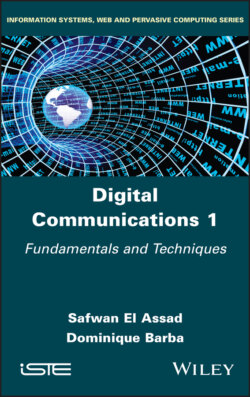Читать книгу Digital Communications 1 - Safwan El Assad - Страница 10
Оглавление
Foreword
We have written this training book on digital communications in the spirit of presenting – in an integrated form – the basic knowledge on which modern digital communication systems are based and, above all, the way in which they are technically implemented, both in principle, and in practice. This book is the product of a long experience of training in this field in engineering school (Polytech Nantes, France).
The training is comprehensive: courses, tutorials presenting many standard problems targeted with detailed solutions, practical work concretely illustrating various aspects of the techniques of implementation.
As we have mentioned, although our experience is primarily that of training engineers, we have, through adaptations of the content, wished to address broader audiences: first in initial training, engineers, Master 2, specialized telecommunications licenses or other related specialties. But also to the trainers by providing them, through tutorials and practices (Lab Works), content that can be very useful in the construction of the training they provide. In continuing education, this book is also addressed to telecommunication technicians or for an additional year of specialization (specific years complementary to training in IUT).
This book, which is composed of two associated volumes, is presented in its first aspect, as a very concise and complete synthesis of the foundations and techniques of digital communications (Volume 1). It is broken down into two parts. The first part concerns the theory of information itself, which deals with both sources of information and communication channels, in terms of the errors they introduce in the transmission of information, as well as ways to protect the latter by using appropriate coding methods. The second part deals with the technical aspects of transmission, we first present the baseband transmission with the important concept of equalization and its implementations. The performance evaluation, in terms of probability of errors, is systematically developed and detailed as well as the on-line codes used. We then present the transmissions with digital modulation of carriers used in transmission (radio transmissions but also on electric cables).
A second important aspect, teaching knowledge and skills, composes this book (first part of Volume 2). It concerns the tutorial aspect of a course. This is an ordered set of about 30 standard problems with detailed solutions covering the different parts of the course. The set should allow a learner to gradually and deeply understand the essentials of this field and acquire the necessary skills to practice them in the industrial world.
Finally, the last aspect concerns practices in the proper sense of the term, an indispensable complement to training progressing to know-how (second part of Volume 2). We propose here a set of five lab works. The interest of these is that they go from the basic measurements on the transmission cables, to the design in software simulation of modems and cyclic coders, through the use of blocks of electronic modules carrying out basic functions useful in digital communications.
For every book sold, we will provide the buyer with two practical pieces of software from MATLAB-Simulink: “Modem QPSK” and “Cyclic encoderdecoder”, free of charge. We will provide necessary explanations and endeavor to help with the set-up of the two pieces of practical material.
